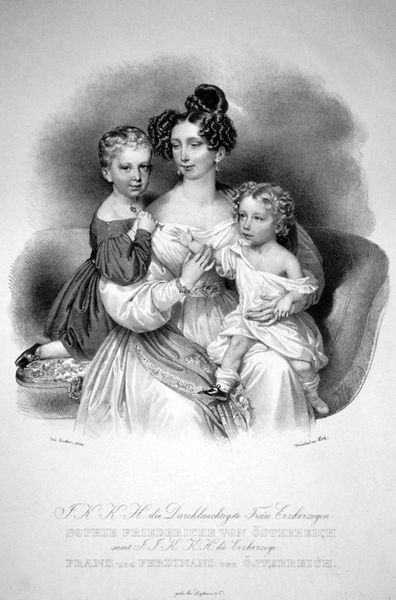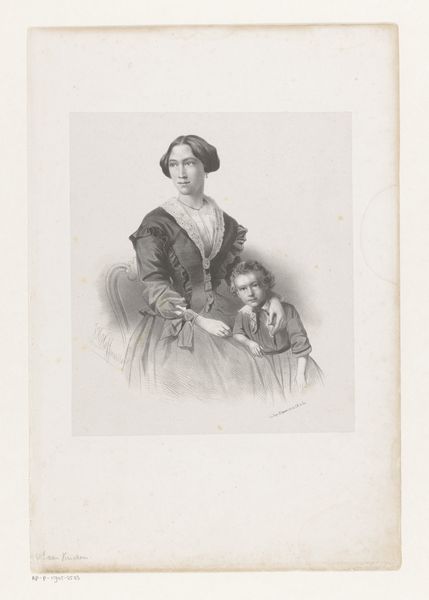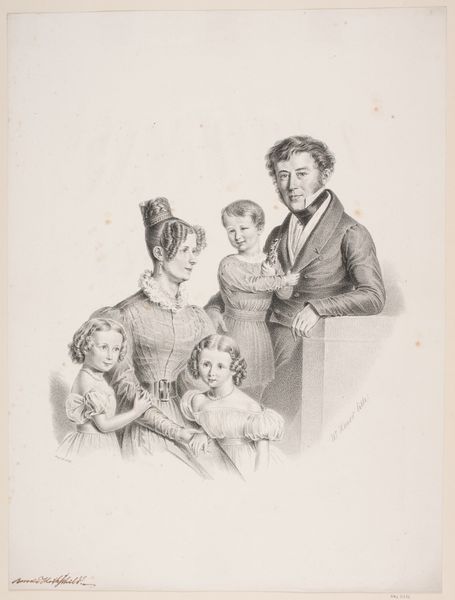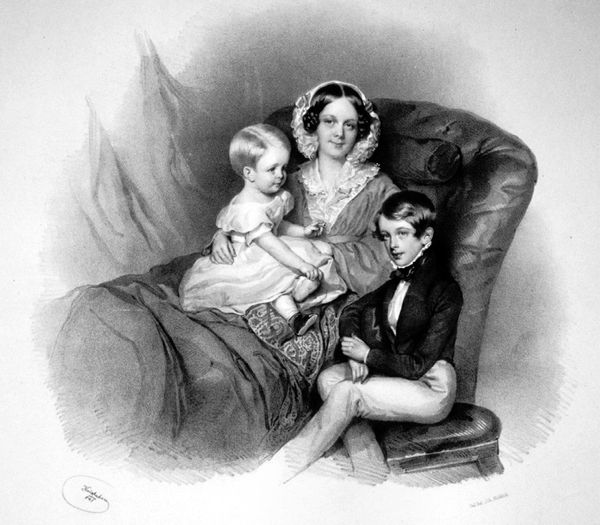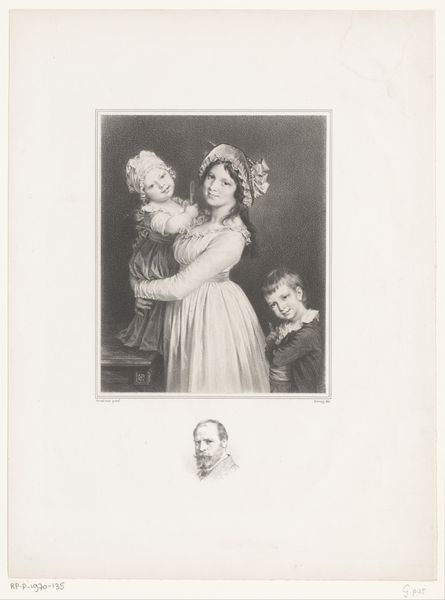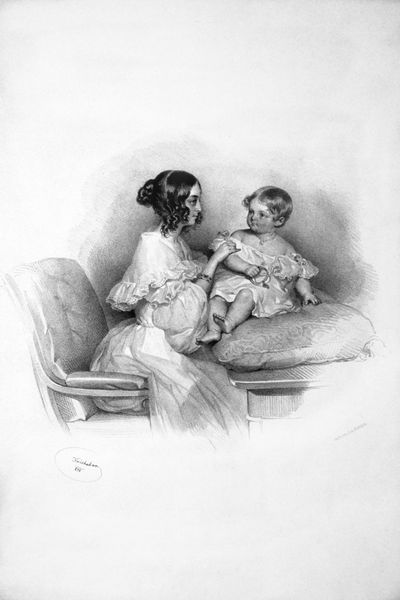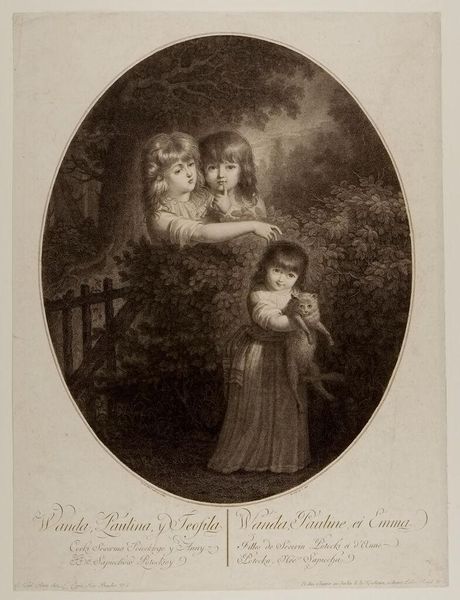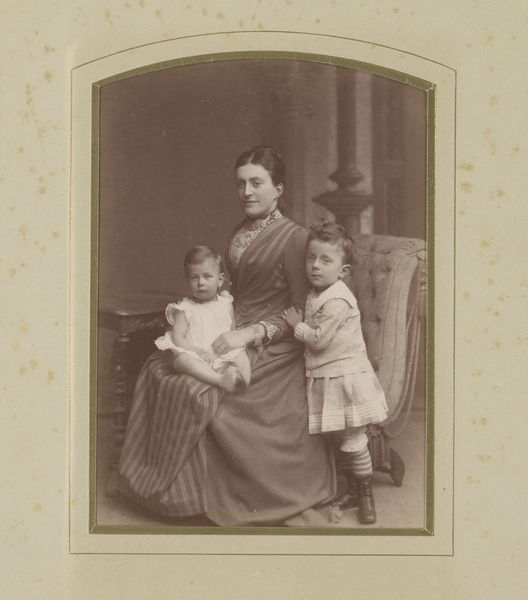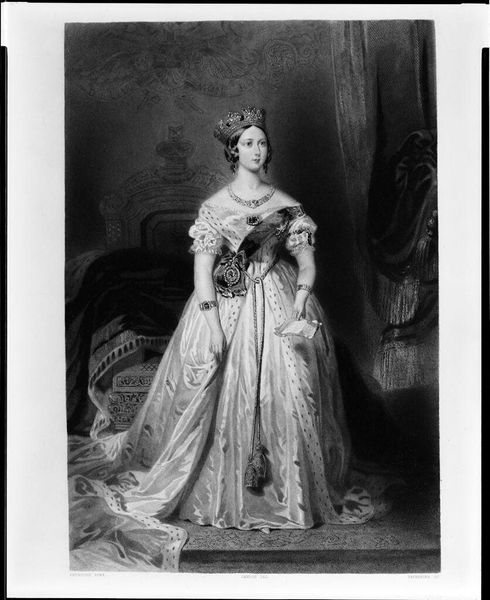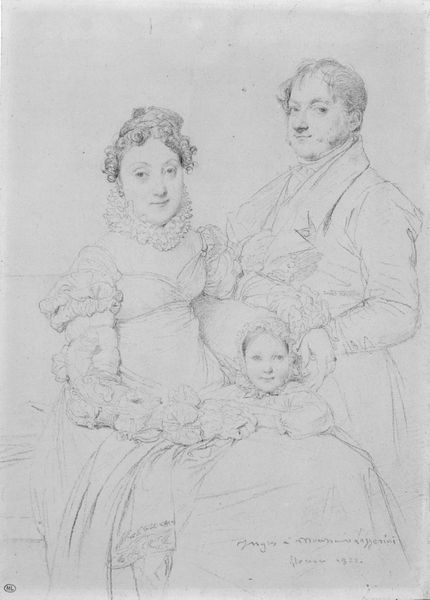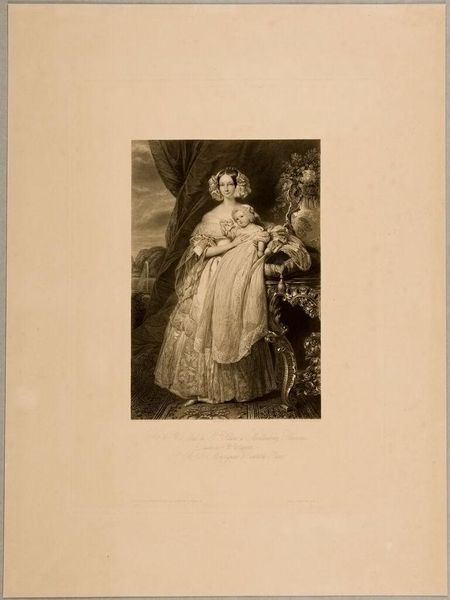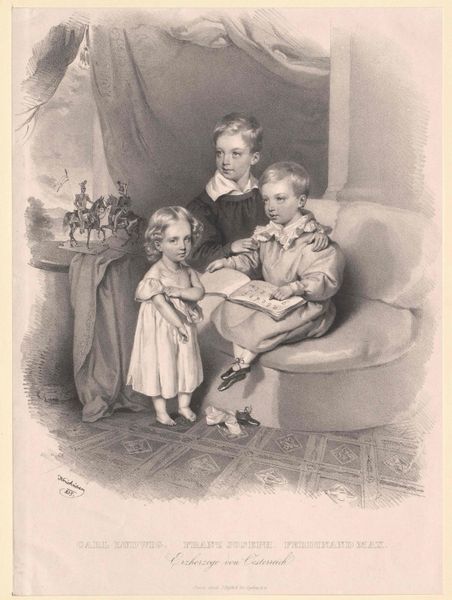
Copyright: Public domain
Curator: Josef Kriehuber created this photographic portrait in 1858. It depicts Gabriele Saaint-Genois, Countess Stolberg, alongside her daughter Anna. Editor: My immediate sense is one of rather somber elegance. The contrast of light and dark tones gives it a gravity that the sentimental subject matter almost belies. Curator: That gravity speaks volumes. Photography in its relative infancy was quite an affair, an engagement fraught with self-consciousness about social position and posterity. The stark monochrome aesthetic becomes associated with truth and authenticity. Editor: And look closely at the lace. That is handwork of tremendous skill, meant to display the Countess's wealth and status but, we shouldn’t ignore, it’s the labor of other hands represented in her attire, not only in the dress itself, but her jewellery, too. Curator: Exactly. This photographic method, new as it was, lent itself so well to the semiotics of Romanticism. Consider the slightly idealized faces, the compositional arrangement almost like a Madonna and Child. The symbolism communicates familial piety, maternal duty, and societal decorum, even down to Anna's carefully arranged dress and ribbons. Editor: Indeed. Though, I wonder about Anna. She doesn’t quite meet our gaze as directly as her mother. Her slight downward glance and the very slight grip on her mother’s fingers imply a sort of unease. Do we think this was from the lighting technology used, making it necessary to keep utterly still, perhaps a challenging request of a child? Curator: Good point. The countess holds her daughter perhaps to convey not only a natural affection but, implicitly, power and stability. It becomes part of the encoding of privilege for this class, this expectation for carefully arranged visibility and regulated feeling. Editor: Understanding that historical element in the production is helpful, not only aesthetically, but thinking about what expectations were built into having an image made then, changes my relationship to the figures shown in this artwork today. Curator: Agreed. By engaging with its layers of technique and tradition, we uncover fascinating insights into not only their identities but, reflect on our own visual literacy today.
Comments
No comments
Be the first to comment and join the conversation on the ultimate creative platform.
